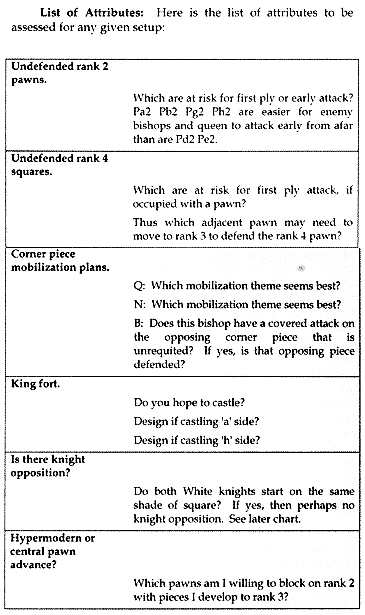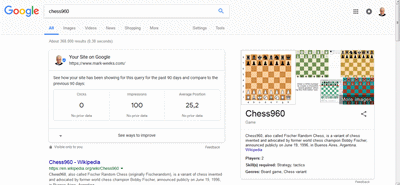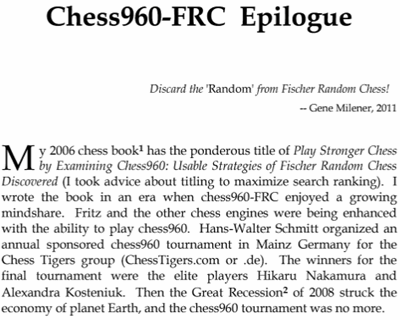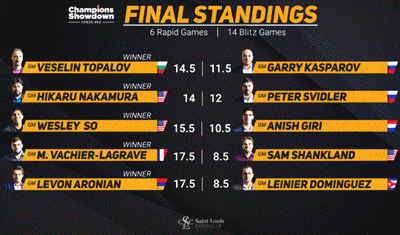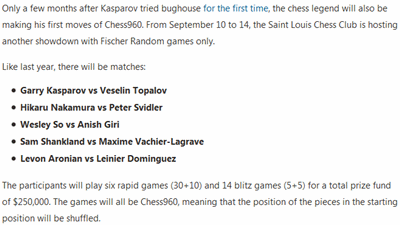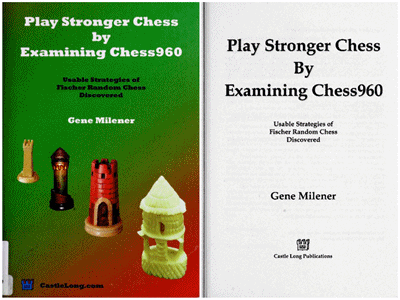Chess is fun. You could play it for days on end (don’t forget to eat!). But using those same 32 pieces, chess players have invented dozens of other variations of chess to make sure the game never gets stale. Two of the most popular "variants" are Bughouse and Chess960. Yes, they are a bit silly, but they also allow for a different kind of creativity. Even the world’s most elite grandmasters play and compete in both!
No one will argue that bughouse isn't a variant -- the four players' strategies have little to do with traditional chess -- but I'll raise my hand once more to question the word when used with chess960. It is, after all, one of the first bullets in Top 10 Myths About Chess960 (May 2012)...
No.2: 'It's a variant of traditional chess'
...and I've given the better part of at least one post to the subject, Chess960 Encounters, Past & Future (October 2011), where I said, 'The classification of chess960 as more than a variant is not a simple difference of opinion on semantics.'
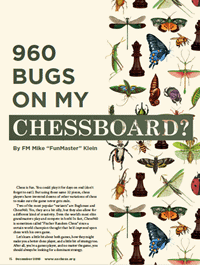 Let's get back to the rest of the Chess Life Kids article. The magazine appears six times per year, is 24 pages long, and is the 'Official Scholastic Publication of US Chess'.
FM Klein's article was featured on the December 2018 cover, and was introduced on the contents page with 'Chess variants are hitting the mainstream!'
Let's get back to the rest of the Chess Life Kids article. The magazine appears six times per year, is 24 pages long, and is the 'Official Scholastic Publication of US Chess'.
FM Klein's article was featured on the December 2018 cover, and was introduced on the contents page with 'Chess variants are hitting the mainstream!'
The three page article gave a page to bughouse and a page to chess960. A page was enough to explain the basics of chess960, i.e. the meaning of the name, the setup of the pieces, the 'funny' castling rules, and examples of castling ('Weird!'). It also gave the main reason for playing it.
So why did Bobby Fischer propose this game? Simple -- studying openings is useless. You know how masters can play 20 or 30 moves of "book"? Well, there’s no such thing in Chess960. Pretty much every game is an unexplored kingdom of newness and some grandmasters think more creativity is possible.
That paragraph gives me plenty of justification to overlook negative words like 'silly', 'funny', and 'weird'. Instead I'll concentrate on the positive : explaining chess960 to a new generation.
The introduction of bughouse to the U.S. chess scene preceded the introduction of chess960 by almost 25 years, a full generation. In Fischer Random Bughouse (July 2011), I once showed that the two chess offshoots can even be merged. That would make yet another 'unexplored kingdom of newness'.
